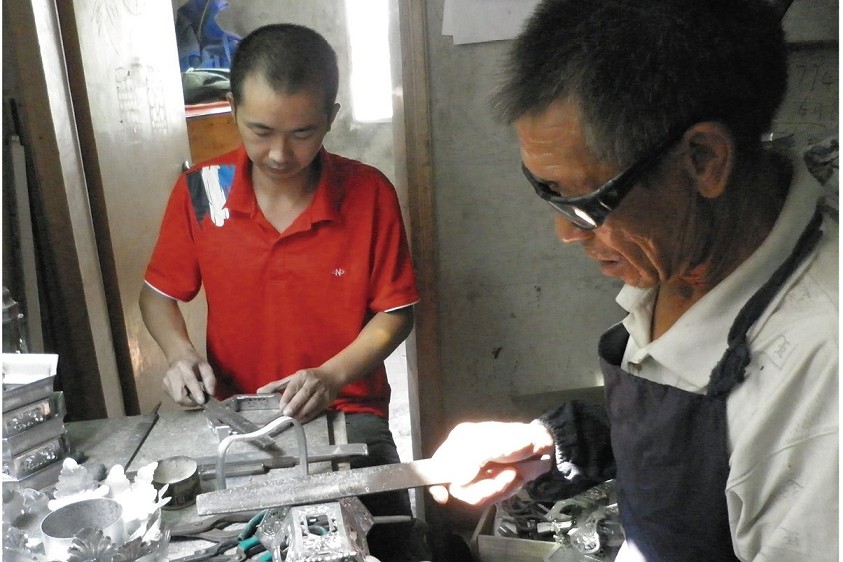·非遗百问·
54.南音什么时候被列入联合国教科文组织《人类非物质文化遗产代表作名录》?其内涵价值是什么?
答:2009年,南音被列入联合国教科文组织《人类非物质文化遗产代表作名录》。
南音也称“弦管”“泉州南音”,是中国现存最古老的乐种之一。汉、晋、唐、宋等朝代,中原移民把音乐文化带入福建,与以泉州为中心的闽南民间音乐相融合,形成具有中原古乐遗韵的文化表现形式——南音。 南音由“大谱”“散曲”和“指套”(俗称“指”“谱”“曲”)三大部分构成完整的音乐体系。南音演奏演唱形式为:右琵琶、三弦,左洞箫、二弦,执拍板者居中而歌,这与汉代“丝竹更相和,执节者歌”的相和歌表现形式一脉相承。其工尺谱记法自成体系,是古代音乐记写形制之遗存。横抱演奏的曲颈琵琶、十目九节的洞箫、二弦、三弦及拍板等,也都因袭古乐器遗制。南音曲目有器乐曲和声乐曲 2000余首,蕴含了晋清商乐、唐大曲、法曲、燕乐和佛教音乐以及宋元明以来的词曲音乐、戏曲音乐等内容。南音以标准泉州方言古语演唱,读音保留中原古汉语音韵。演唱时讲究咬字吐词,归韵收音。南音曲调优美,节奏徐缓,委婉深情,古朴幽雅。南音在千年流传中形成深厚的群众基础,成为陶冶情操、自娱自乐的文化表现形式,它与闽南人的生活密切相关,闽南人聚居之地几乎都有民间南音社团。除了闽南地区和港澳台地区以外,南音还流播到菲律宾、印度尼西亚、新加坡、马来西亚、泰国、缅甸、越南等国家,成为维系海外侨胞和台湾同胞乡情的精神纽带,对增进民族认同感也起到了积极作用。
Q54.When was Nanyin inscribed in the Representative List of the Intangible Cultural Heritage of Humanity? What is the intrinsic value?
Answer: Nanyin inscribed in the Representative List of the Intangible Cultural Heritage of Humanity in 2009.
Nanyin, also called “Xianguan” (literally String and Wind Instrument) or “Nanyin of Quanzhou”, is one of the oldest musical performances currently existing in China. During the dynasties of Han, Jin, Tang and Song in Chinese history, immigrants from central China brought their musical culture to Fujian, where the music style blended with the local folk music in Quanzhou-centred Minnan area, hence Nanyin came into being. Nanyin has a complete music system comprising “Dapu” (melody performed by instrument), “Sanqu” (melody with words) and “Zhitao” (melody with instrument performance instructions). Nanyin is usually performed by five people: two performers with the instrument of pipa and sanxian sitting on the right, two performers with the instrument of dongxiao and er’xian on the left, while the singer holding rhythm instrument sitting in the middle. The musical instrument, performance style, and musical notation pattern of Nanyin are vivid demonstration of China’s ancient music performance art as far as two thousand years ago. There are over 2,000 pieces of compositions of Nanyin, including the instrumental and vocal music performances, and the music styles range from popular music in Jin and Tang Dynasties to Buddhism music and to literature genre based music during Song, Yuan and Ming Dynasties. Nanyin is performed in standard Quanzhou dialect in ancient time, and its melody is delicate and elegant with strong affections. Nanyin has developed a robust folk basis and it is performed intensively in Minnan people’s daily life. Apart from Minnan, Hong Kong, Macau and Taiwan in China, Nanyin has also spread to Phillipines, Indonesia, Singapore, Malaysia, Thailand, Myanmar, and Viet Nam, and it has become an efficient way to cure the homesickness of overseas Chinese and Taiwan compatriots.

锡雕(同安锡雕)
(图片来源于福建省群众艺术馆——省非遗中心官网)


